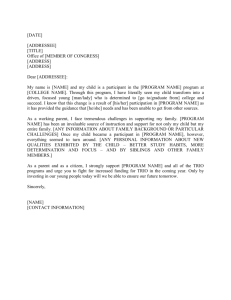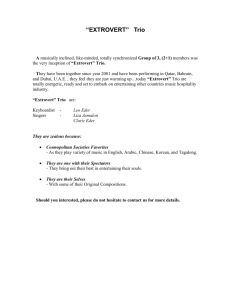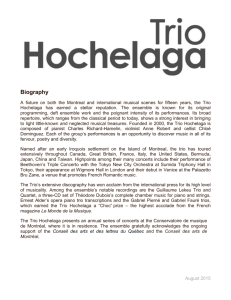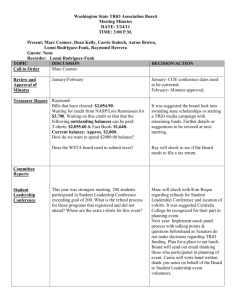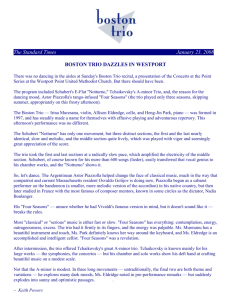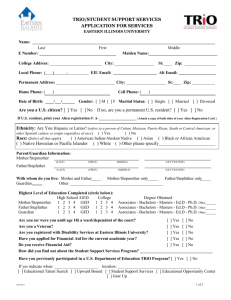CAS Standards Presentation
advertisement
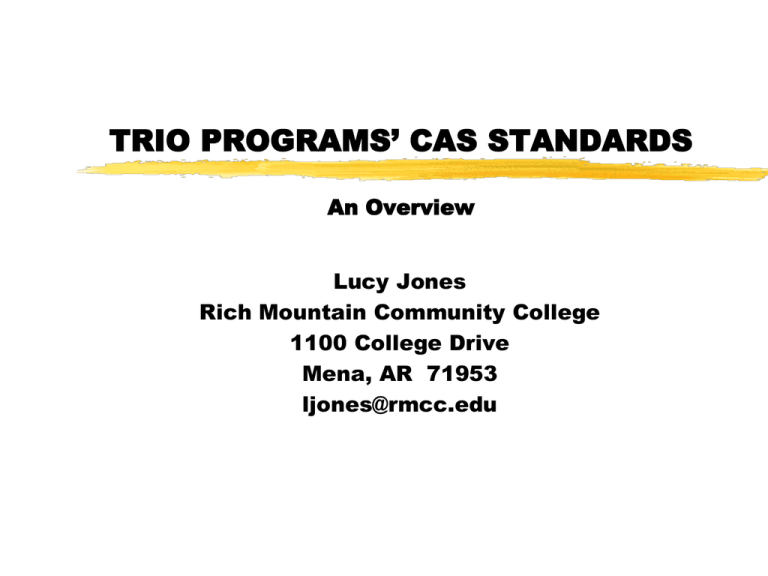
TRIO PROGRAMS’ CAS STANDARDS An Overview Lucy Jones Rich Mountain Community College 1100 College Drive Mena, AR 71953 ljones@rmcc.edu What is CAS? Council for the Advancement of Standards in Higher Education Quality Programs and Services for Students (CAS) Founded in 1979 Consortium of 35 higher education associations 25 functional area standards and guidelines designed to guide the quality of practice (includes TRIO) Many colleges and universities use functional standards (advising, counseling, student unions, learning centers housing, admission) Credibility of established organization CAS Standards and Guidelines 1. 2. 3. 4. 5. 6. 7. 8. Mission Program Leadership Organization and Management Human Resources Financial Resources Facilities, Technology & Equipment Legal Responsibilities 9. Equal Opportunity Access and Affirmative Action 10. Campus and Community Relations 11. Diversity 12. Ethics 13. Assessment and Evaluation Why TRIO Standards? Program Improvement: 1. Opportunities to improve services and outcomes for students 2. Opportunities to improve practice Professional Development: tool to promote staff discussion & responsibility for evaluation and project outcomes New Projects: foundation for start up Why TRIO Standards? Evaluation and Accountability: formative and summative 1. Improve program practice 2. Benchmarks for self-assessment Credibility at host institution Opportunities for state and regional TRIO associations to take leadership role in promoting standards Usages of CAS TRIO Standards & Self Assessment Guides (SAGs) In your institution or agency As a means to support professional staff development As a formative and summative evaluation tool; promote project self-assessment & development The outcome can Provide legitimacy and accountability Validate accreditation, assessment Enhance programs and services that benefit the students’ educational and personal development Self-Assessment Process 1. Establish the selfstudy team 2. Understand the standards and guidelines 3. Compile and review the documentary evidence 4. 5. Judge performance Implement the assessment and set priorities for project improvement
